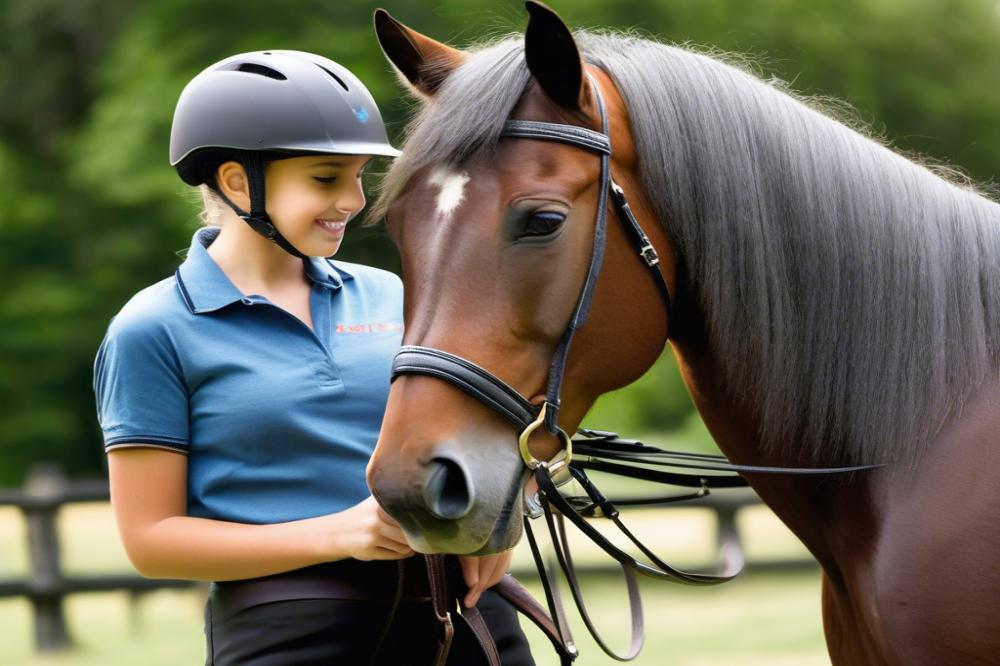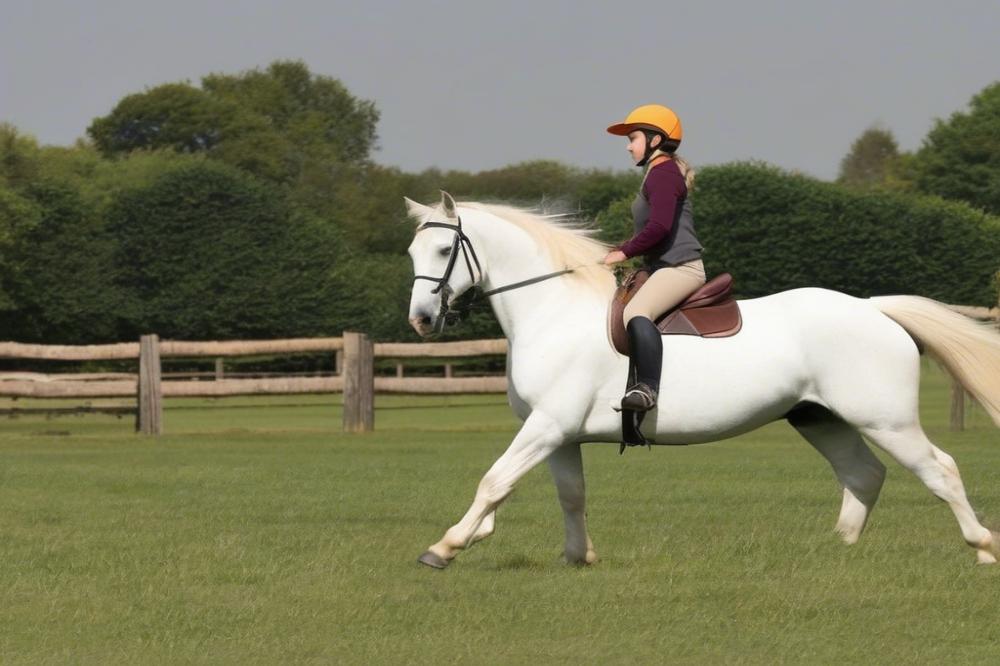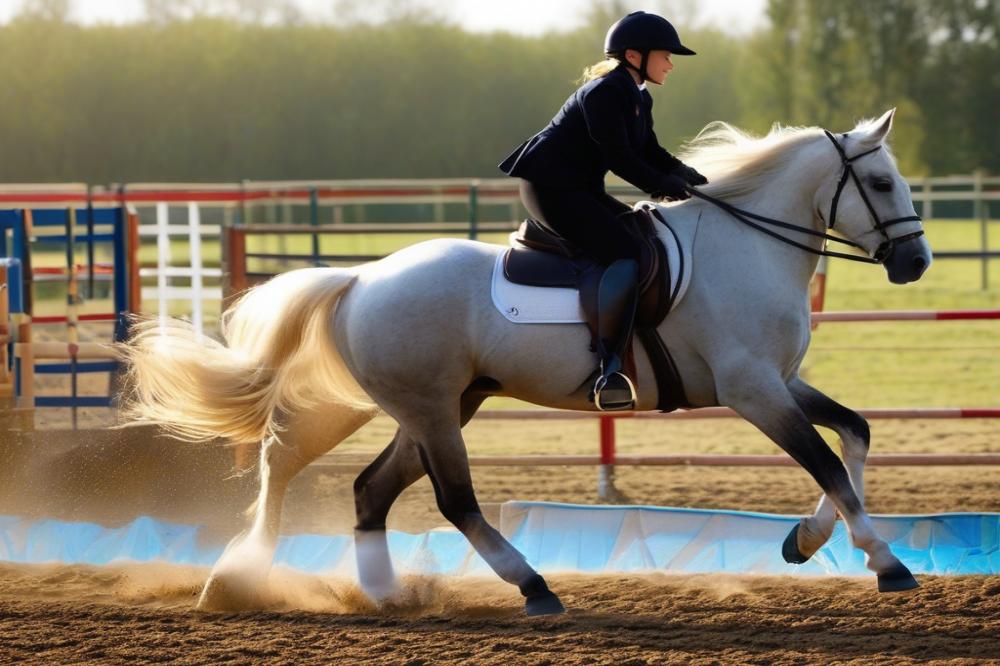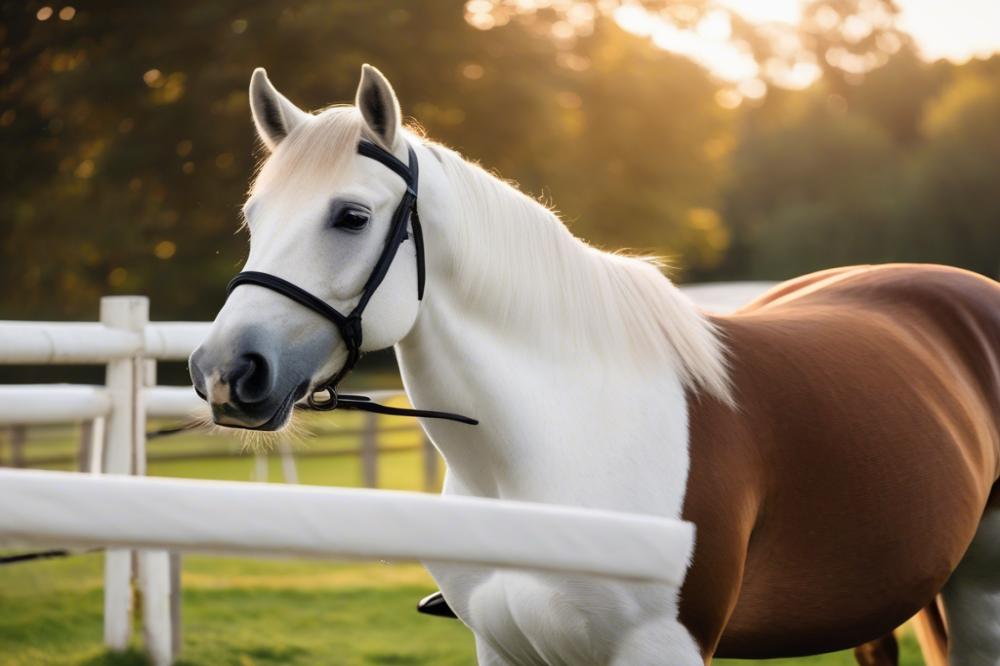Understanding the Age for Horse Riding
When it comes to riding horses, many folks might wonder just how old a horse needs to be before it can take its first gallop under a rider. The age at which a horse becomes ready for riding is important to grasp not only for safety but also for the well-being of the animal. Riding a young horse can be exhilarating, but it’s essential to know the right age for both the horse’s physical and mental development.
Horse training isn’t just a science; it’s an art with layers like an onion. Young horses must grow and mature before they can be placed in a saddle, and understanding this process connects to their overall equine development. You wouldn’t want to hop into a car with someone who just got their driver’s license, right? Similarly, a horse needs some time to learn the ropes without feeling overwhelmed.
Horse care goes beyond just grooming and feeding. It involves knowing when a horse is ready to start a riding career. For example, many professionals suggest waiting until a horse reaches at least three years of age. By this time, their bones are stronger, and they have a better chance of handling the physical demands of riding. It’s like waiting until a kid is old enough to ride a bike without training wheels. Nobody wants to see a youthful steed, still as green as a fresh apple, struggle under the weight of a rider.
This article aims to unravel the various factors to consider when deciding the right age for putting a saddle on a horse’s back. From equestrian tips to the signs of readiness in a horse, we’ll dive into it all. Plus, there are so many fascinating aspects of riding to consider, including the stunning appaloosa coat patterns that can make a horse look magnificent under the sun!
As we explore this topic, let’s not forget to have a little fun too. Did you know it’s often joked that between horse and car which is the fastest, the horse is still the one who gets the best snacks? It’s true, after all, nothing beats a sugar cube reward after a ride! So, let’s saddle up, and get to the bottom of this important question together.
Understanding Horse Development

Stages of a Horse’s Growth
Every horse goes through different stages as they grow up. Knowing these stages can help you decide the right time for riding. Young horses experience several key phases. Each stage has its unique set of needs.
Foals and Weanlings
Foals are newborn horses. They are full of energy and curiosity. In the early weeks, they bond with their mothers and learn the ropes of life. Foals usually stay with their moms for several months. This helps them develop important social skills. When they reach around six months old, weaning happens. At this time, they transition from their mothers to eating grass and hay. Weanlings are like toddlers; they are playful and still learning. Equine training for this age focuses on basic handling and care. Gentle exposure to human interaction is essential for their future.
Yearlings and Two-Year-Olds
Next comes the yearling stage. Who doesn’t love a teenager, right? Yearlings are somewhat like human teens—they’re curious and a bit rebellious! They prefer exploring and testing boundaries. You might find them galloping about, showing off. Training during this period is vital. Horse training should focus on groundwork and getting them used to being around people. By age two, they are physically strong but not fully mature. At this point, their bodies are still growing, and so is their behavior. Patience is key! Over-riding or intense training isn’t recommended for horses at this age. Keep it light, as equine development is a gradual process.
Maturity and Full Physical Development
Most horses reach full maturity around five years old. Some breeds take a bit longer. During this time, their bodies and minds settle. Good horse care during these years pays off. A trained horse is a joy to ride and work with. By the time they’re ready for serious riding, their growth has mostly stabilized. Young horses can start light riding as early as two. However, keep in mind their individual growth pattern. Equestrian tips for beginners should include waiting until your horse is mature enough for intense riding. A well-grounded horse can handle a variety of tasks and is ready to dive into the world of equestrian sports.
Every phase of development brings its challenges and joys. Understanding each of these stages contributes greatly to a horse’s successful journey. It is essential and rewarding for both horse and rider.
Recommended Horse Riding Age Guidelines

General Age Recommendations for Riding Horses
Every horse has its time to shine. Most experts suggest that horses should be at least 3 years old before they start being ridden. This age allows for proper physical and mental maturity. Young horses often lack the muscle and focus needed for a good riding experience. Before jumping into the saddle, ensure they have completed some basic training. This will make the journey smoother for both the rider and the horse.
Influence of Breed and Size on Riding Age
Not all horses are created equal. Various breeds develop at different rates. For instance, large breeds like Clydesdales may need to wait a bit longer before they can carry a rider. Their growth spurts can be unpredictable. Smaller breeds, on the other hand, might be ready earlier. Size plays a big role in their ability to handle the weight and pressure of a rider. The specifics of each breed can influence both physical strength and temperamental readiness.
Differences Between Professional and Recreational Riding
When it comes to riding, the lines can blur between professional and casual experiences. Professional riders often work with younger horses that have undergone rigorous horse training. These horses might start under saddle at a younger age due to specialized equine training programs. By contrast, recreational riders may prefer to wait longer for their horse to develop fully. Fun should always be the main focus. In a leisurely setting, finding the right age is less about competition and more about enjoyment, comfort, and safety. Employing good equestrian tips can help anyone choose the best time to hop on for a ride.
Factors Influencing Riding Age

Physical Readiness of the Horse
When looking at when a horse can start being ridden, physical readiness is a big deal. Horses grow at different rates, just like kids. Some may develop strong muscles and bones early, while others may take their time. Generally, most horses are ready to start light riding around the age of three. They should have solid leg strength and a sturdy back. Riding a horse too soon can lead to injuries. Keeping an eye on their body condition is key. If a horse looks fit and healthy, they might be on the way to being ride-ready!
Mental and Emotional Maturity
Mental maturity is another important factor. Not every horse is emotionally prepared to handle a rider. Imagine trying to drive a car without knowing how. Horses need to be calm and focused to succeed in riding. A young horse might be more easily startled or distracted. Patience is essential during this phase of their equine development. They require a good amount of socialization and exposure to handle new situations. Sometimes, it’s not just about age; it’s about confidence too!
Training and Experience Levels of the Horse
Training plays a massive role in when a horse gets on a saddle. Quality horse training can make a vast difference. Being familiar with handling and groundwork lays a solid foundation. A horse that has been worked with regularly will likely take to riding much better. Equestrian tips suggest starting with basic commands before adding a rider. This prepares them mentally and physically. It’s also wise for the horse owner to recognize when their animal is struggling or losing focus during training. Knowing when to take a break is just as crucial as riding itself.
Safety Considerations for Young Horses
Risk of Injury in Younger Horses
When it comes to younger horses, safety should always take center stage. From a lack of experience to unexpected reactions, the risk of injury can escalate quickly. Horses may not yet have the strength or coordination of mature equines, making them prone to accidents. Rumbling around like a ball in a pinball machine, young horses might spook at things that adults easily ignore. It’s essential to observe each pony’s behavior closely. An overly energetic horse can be a recipe for disaster, especially when paired with an unprepared rider. Young horses need to gain confidence and control before saddling up.
Signs of Readiness for Riding
Determining when a horse is ready to start riding isn’t merely about age; behavior plays a crucial role too. Look for calmness during handling and feet that are easy to manage. A horse that shows interest in ground work is a promising sign. If they trot alongside you eagerly, that’s a good indication they’re ready for the next step. Horses should also have basic training down pat. Mastering the fundamentals of equine training lays the groundwork for successful riding experiences. Keep an eye on their body language. Ears forward, relaxed posture, and an alert but calm demeanor suggest readiness.
Gradual Introduction to Riding Activities
Once you’ve established readiness, introducing riding can be an enjoyable journey, but go slow! Start with short sessions and work on basic commands. Breaking riding down into smaller tasks can help build their confidence and skills. A gentle approach helps prevent overwhelming the horse. Onlookers may not realize that a relaxed pace makes a world of difference in their equine development. Mix in fun activities, like ground games, to keep things lighthearted. A horse that enjoys what they do is more likely to succeed. Gradually adding equipment, like saddles, can also ease the transition. Remember, patience is key; Rome wasn’t built in a day, and neither is a well-trained steed!
Age Considerations in Different Riding Disciplines
Overview of Various Riding Disciplines
Exploring riding can be like opening a box of chocolates. You never know what you’ll get! Each discipline offers a different experience. There are Western riding, English riding, and even dressage. Western saddles feel different than English ones. Also, jumping involves a lot of skill and courage. Each style has its own focus and techniques. Finding the right fit for your horse is important as it can make all the difference.
Age Recommendations for Discipline-Specific Training
When starting equine training, age plays a crucial role. For example, younger horses, typically around two years, can begin basic groundwork. This helps develop their skills without overworking them. Horses usually start actual riding around the age of three. This age allows their bodies and minds to adjust. As they mature, training can become more intense. Advanced maneuvers often require horses that are at least five years old. It’s all about balancing their physical readiness with mental maturity.
Examples of Age-Appropriate Activities
Younger horses can engage in fun, age-appropriate activities. Groundwork is a great place to start. Simple exercises build trust between the horse and rider. Games that promote problem-solving skills can help too. Think of it as horse care coupled with horse riding education. As they become older, starting slow is key for their development. Adding small jumps at around four or five years can be exciting. This way, they enjoy the process while learning essential skills.
Bigger jumps, intricate dressage moves, or advanced trail rides come later. Patience is essential. Always listen to the horse’s body language. If your horse looks unsure, it might be time to rethink things. Engaging in regular sessions ensures a horse builds confidence naturally. So, have fun mixing learning and play as they grow!
Teaching Young Riders About Age and Responsibility
Importance of Young Rider Education on Horse Age
When kids first start dreaming about riding, they often forget one crucial thing: horses are not just toys. They are living beings with their own needs and age limits. Educating young riders about a horse’s age is vital. A horse matures just like people do, and jumping in too soon can lead to problems. Teaching kids that patience is key will go a long way. Understanding that horses have their timelines can help avoid injuries for both the rider and the horse.
Understanding the Needs of the Horse
Not every horse is ready for just any rider. Some require more care than others. Young riders should grasp what specific needs their equine partners have. This means knowing when to push forward and when to take a step back. Every horse is unique in temperament and physical ability. Comprehending this can make a big difference in horse training. Horses can get stressed, just like humans, and that’s why learning to read their signals is so essential.
Encouraging Patience and Respect for Horse Development
Good horse riding isn’t a race. Young riders can build respect for their horse’s development by waiting for the right moment. Kids might be eager to jump into the saddle, but they need to learn to listen. Adjusting their expectations can create a more respectful relationship. A little patience goes a long way in equine training. Respecting a horse’s growth means not hurrying their riding lessons. Remember, every horse wants to feel safe and comfortable too!
Wrapping It Up: Riding Age Insights and Safe Practices
In summary, the age at which a horse is ridden should be carefully considered. Younger horses, often just starting their training, typically require more time to build strength and confidence. It’s generally recommended that they be at least three years old before they start carrying a rider. However, maturity can vary significantly from one horse to another, much like people! A horse at a younger age may be ready sooner if they have had proper training and conditioning. Learning the signs of readiness, such as how they respond to handling and their overall temperament, can truly make a difference.
Having a responsible approach to riding is crucial. Riders must be aware that patience is key—both with horses and ourselves. A spirited horse can be just as exciting as a gentle giant, but understanding their behavior, including nuances like horse ear movement, can help improve the bonding experience. Remember the old saying, “A little patience goes a long way”? Well, that’s especially true in the equestrian world.
Every journey first starts with a single step, or in this case, a single ride. It’s important to partake in safe and appropriate horse riding experiences. Whether you’re a budding rider or a seasoned expert, the aim is to foster a positive relationship with these magnificent animals. Protective gear, like the helmet, is a must. And speaking of safety, do jockeys wear protective vests? Yes, they do! This practice offers an extra layer of security, which can never be too emphasized.
Ultimately, managing expectations while riding is essential. Every ride is an opportunity to learn something new about the horse and oneself. Ensuring everyone—including your four-legged friend—is comfortable leads to better performances and happier riders. As you embark on the riding adventures ahead, keep in mind that the bond formed through care, communication, and a sprinkle of humor can create unforgettable experiences. Happy riding!



